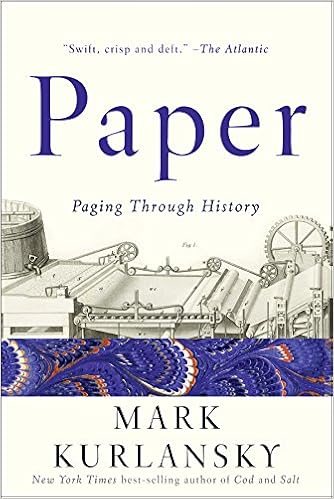
Not well researched or organized. The text goes all over the place, often leaving paper per se very far behind. Largest problem are the glaring errors which can't be ignored. Some make Gutenberg sound like some kind of simpleton. For example, on page 113, Gutenberg did not ink his type with “his own formula of gallnut shaving…soot and water,” as stated by the author. Such ink would simply pool on the metal surface of the typeface then run off, smear and soak into the handmade paper creating a blurry blot. Instead he mixed up his own ink, an ink that was definitely NOT water-based. The ink he made up had to be a special ink similar to modern day printers’ ink which is oil-based. This was an extraordinary move, a brilliant innovation, perhaps as significant as his use of movable type, hand-made linen paper and the press itself. The British Museum page on the Gutenberg Bible says: “The ink used by Gutenberg was also a new development. It was not really ink at all, more like a varnish or oil paint. Unlike writing-ink it is oil-based, not based on water. Water-based ink would simply run off the metal types whereas the thick, viscous oil-based varnish sticks to them.” His ink was also distinctive in that it had a glittering surface indicating that that it contained a high metal content, in particular copper, lead and titanium and also sulphur.
Kurlansky’s statement that he used molten lead for his typeface oversimplifies the case. He used a metal alloy consisting mostly of lead and tin, with a small amount of antimony for hardening. Antimony has the rare property of expanding as it cools, giving the casting sharp edges needed to create the crisp print that distinguished his work.
On page 10, Kurlansky says a papyrus reed stem used by the Egyptians to make papyrus paper “peels like an onion” – it doesn’t. The core of lightweight white pulp found inside the stem has to be sliced with a sharp knife or razor into thin slices.
Further, he states there are “about twenty layers” inside the stem, again completely wrong.
He needs to publish some sort of correction page to go with this book, otherwise it misinforms.
No comments:
Post a Comment